Russ Ouellette
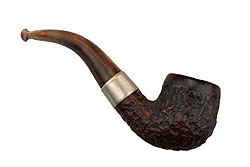 The pipe collector’s dilemma—imperfections and fills. Could the beautiful shape of a one-of-a-kind handmade pipe overcome the disappointment of a flaw in the briar, or an attempt to fill the flaw? Certainly, some collectors abhor fills more than a sand pit or a void. Why? Maybe because they feel that the fill is deceptive; a way to try to cover up a problem with the wood. It might be that most fills will eventually become more noticeable as the wood ages and colors. I want to look at this subject, but one thing I will promise you is this: nothing I write will, by any means, settle anything. This is a truly subjective issue. All I want to do is to bring the thoughts to light, and to offer some differing viewpoints.
The pipe collector’s dilemma—imperfections and fills. Could the beautiful shape of a one-of-a-kind handmade pipe overcome the disappointment of a flaw in the briar, or an attempt to fill the flaw? Certainly, some collectors abhor fills more than a sand pit or a void. Why? Maybe because they feel that the fill is deceptive; a way to try to cover up a problem with the wood. It might be that most fills will eventually become more noticeable as the wood ages and colors. I want to look at this subject, but one thing I will promise you is this: nothing I write will, by any means, settle anything. This is a truly subjective issue. All I want to do is to bring the thoughts to light, and to offer some differing viewpoints.
So, is it deception to use a fill? Certainly not, if the description of the pipe points it out, and the pricing of the pipe reflects the fact that it exists. Also, let’s face it, a smooth pipe with dark stain and no noticeable voids in the wood that sells for less than $150 is almost certain to have a fill. Is this a "con"? I don’t believe so, because my experience tells me not to expect perfection at that price.
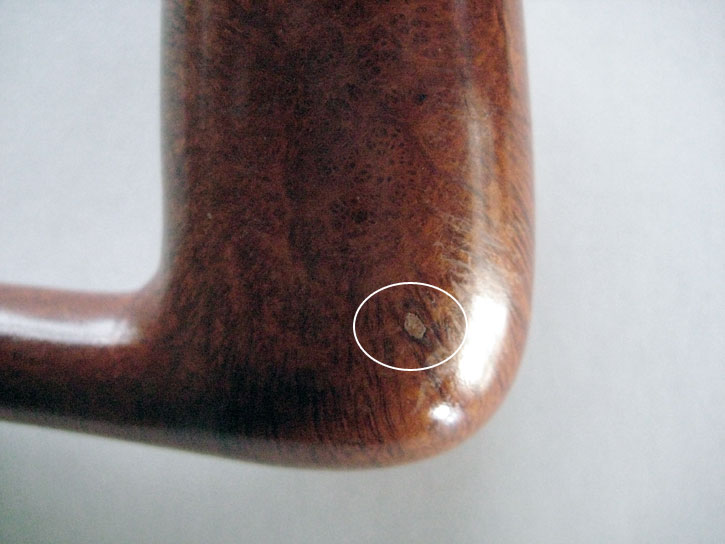
What about sandblasting and rustication? Are these always used to disguise flaws? Certainly not. Many excellent pipemakers are renowned for their sandblasts and specially select blocks because they can see incredible ring grain which will blast incredibly well. Anyone who has seen one of Jim (J.T.) Cooke’s blasts that are so deep and sharp that you could shave with it would never assume that he originally wanted to make a smooth pipe. What about those magnificent, deep, craggy coral-type rustications, so well done by some of the great Italian companies? Are they always from flawed wood? Maybe the briar is spotless, but the grain is weak? Is that a "flaw"? As you can see, we’re creating more questions than answers.
For that matter, how are fills accomplished? Most commonly, in factory-made pipes, they normally use a putty along the lines of Plastic Wood and then stain the pipe in a dark shade, or possibly paint it. Most of these pipes have a retail price under $100 and allow a pipe smoker on a budget to own an otherwise decent pipe at a very fair price. I can’t see a reasonable person finding flaw (pun intended) with this. The issue begins with the other method of filling a pit. In this case, some very fine sawdust, generally produced during the sanding process, is mixed with a thin adhesive like Cyanoacrylate (so called, "super glue") and then packed into the flaw and sanded. This can be a problem if the intention is to sell the pipe at a super-premium price, but as long as the pipe is brought down to a more fair market-value, I can’t see a difficulty. This would allow someone to have a piece that’s nearly perfect for a better price. Of course, if the buyer wants to pass it off as a flawless pipe, that’s another situation entirely.
Really, what’s wrong with disguising a blemish with putty or texture? Every block of wood costs the maker money, and some, like those with a flaw in the chamber, or horrifically large voids, are going to be thrown away, so why not try to save them? Again, it comes down to whether the idea is to reclaim the investment in labor and materials, or to try to make a big chunk of change by passing off an inferior piece of wood as a masterpiece. Knowing the people in this industry as I do, I would say that the people in the latter group are in a miniscule minority. For that matter, if someone were to try to deceive, it wouldn’t take long for someone to discover it and even less time for the word to get out.
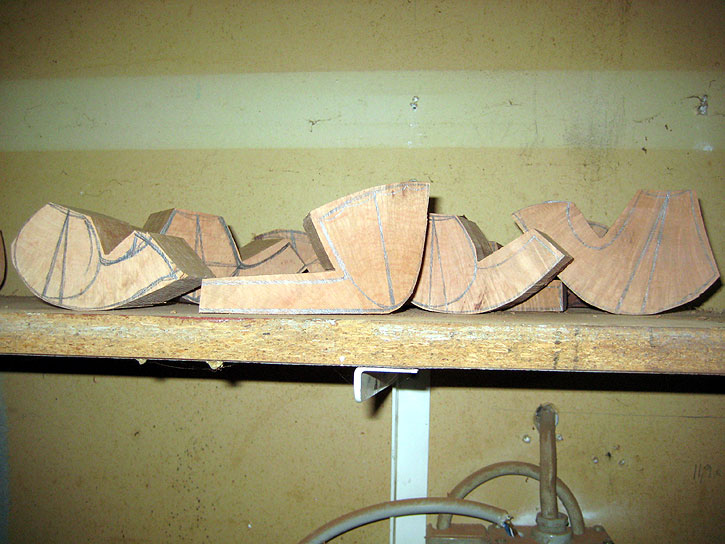
A couple of years back, this subject became the focus of a number of articles and comments in the North American Pipe Collectors Society’s The Pipe Collector. Some of the people who weighed in on the subject are very well-respected members of the pipe smoking/collecting community, and even they couldn’t agree. That’s why I’m not trying to draw any definitive conclusions here.
Certainly, in the case of the low-priced, mass-market pipes, the company will make an attempt to save all but the most severely flawed pieces. That’s why so many of them are rusticated, blasted or dark stained/painted. Personally, I don’t mind the matte-finished carved and sandblasted pipes all that much. The heavily lacquered models can trap the heat, so I find them a bit problematic, but your mileage may vary.
At the opposite end of the spectrum are the particularly persnickety makers who won’t tolerate anything that doesn’t live up to standards. When I visited with Rolando Negoita in his workshop, one of the folks who made the trip with me asked him how he dealt with flaws. He reached under one of his benches and pulled out three crates that were relatively full of unfinished stummels. All of them had a flaw of one sort or another. Rolando explained that he wouldn’t sell them, or even complete the pipe and give it as a gift because he didn’t want his name associated with it. Let’s face it, if Rolando gave you a pipe as a gift, you’d mention his name, so he has a point. By the way, he keeps the discards so he can use the shapes as a template if he ever comes across a similarly shaped block with the same kind of grain. And I’m sure that a number of the well-known artisans today hold a similar philosophy. So if you ever wonder why some of the artisanal pipes today sell for so much, figure that every block of briar they use costs at least $80, and that a good number of those blocks never see the light of day, the numbers have to balance out.
As I wrote earlier, nothing here solves or settles anything, but if it gives you something to consider, I feel that it was worth writing.
|
Russ Ouellette is the blender/creator of the Hearth & Home series of tobaccos for Habana Premium Cigar Shoppe and www.pipesandcigars.com in Albany, NY. He has been a pipe smoker and blender for over 30 years, and enjoys feedback from the pipe smoking public. You can reach Russ at russo@pipesandcigars.com or by calling 1-800-494-9144 on Monday, Wednesday and Thursday from 9 am to 5 pm and Friday from 1 pm to 5 pm. |









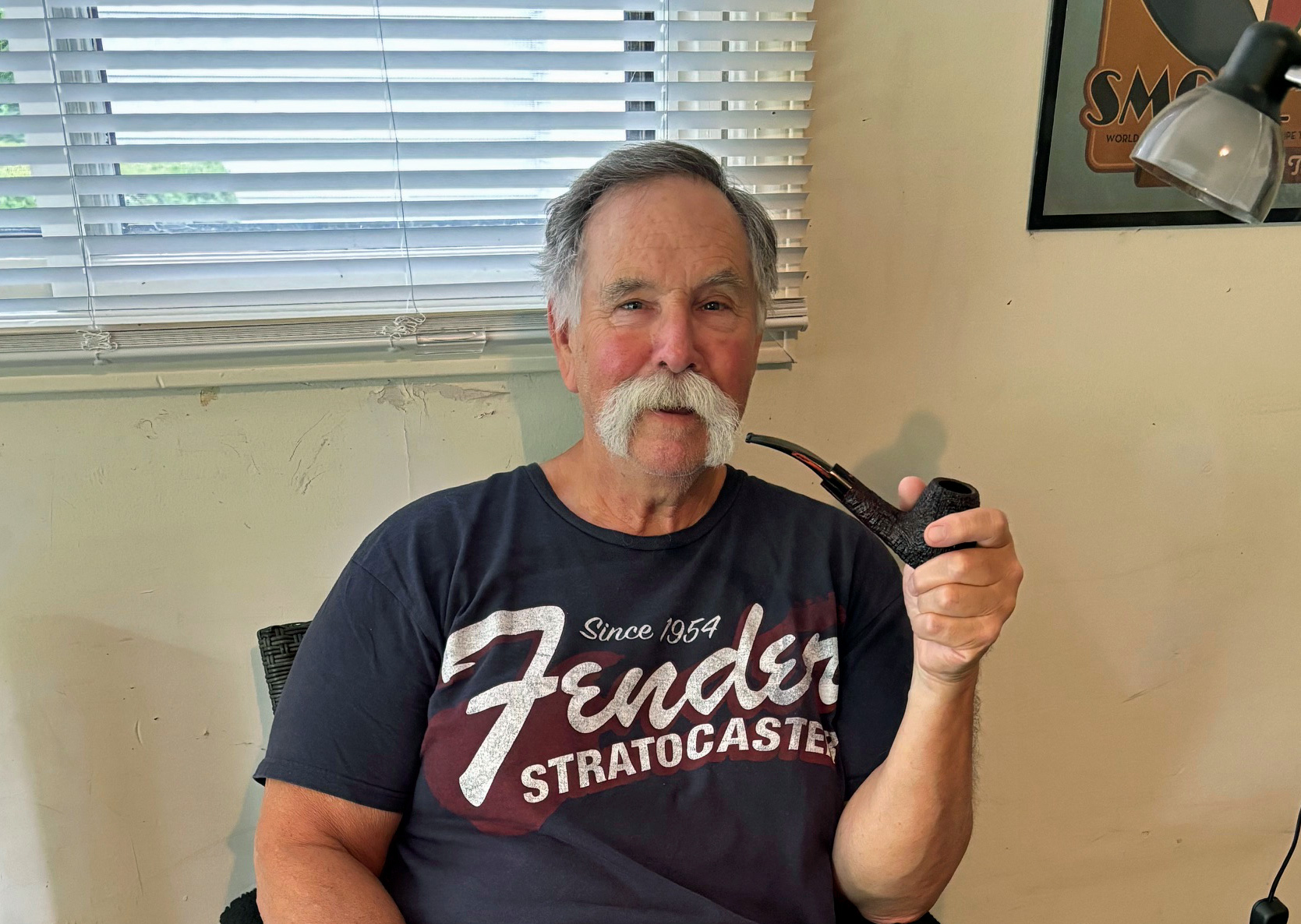
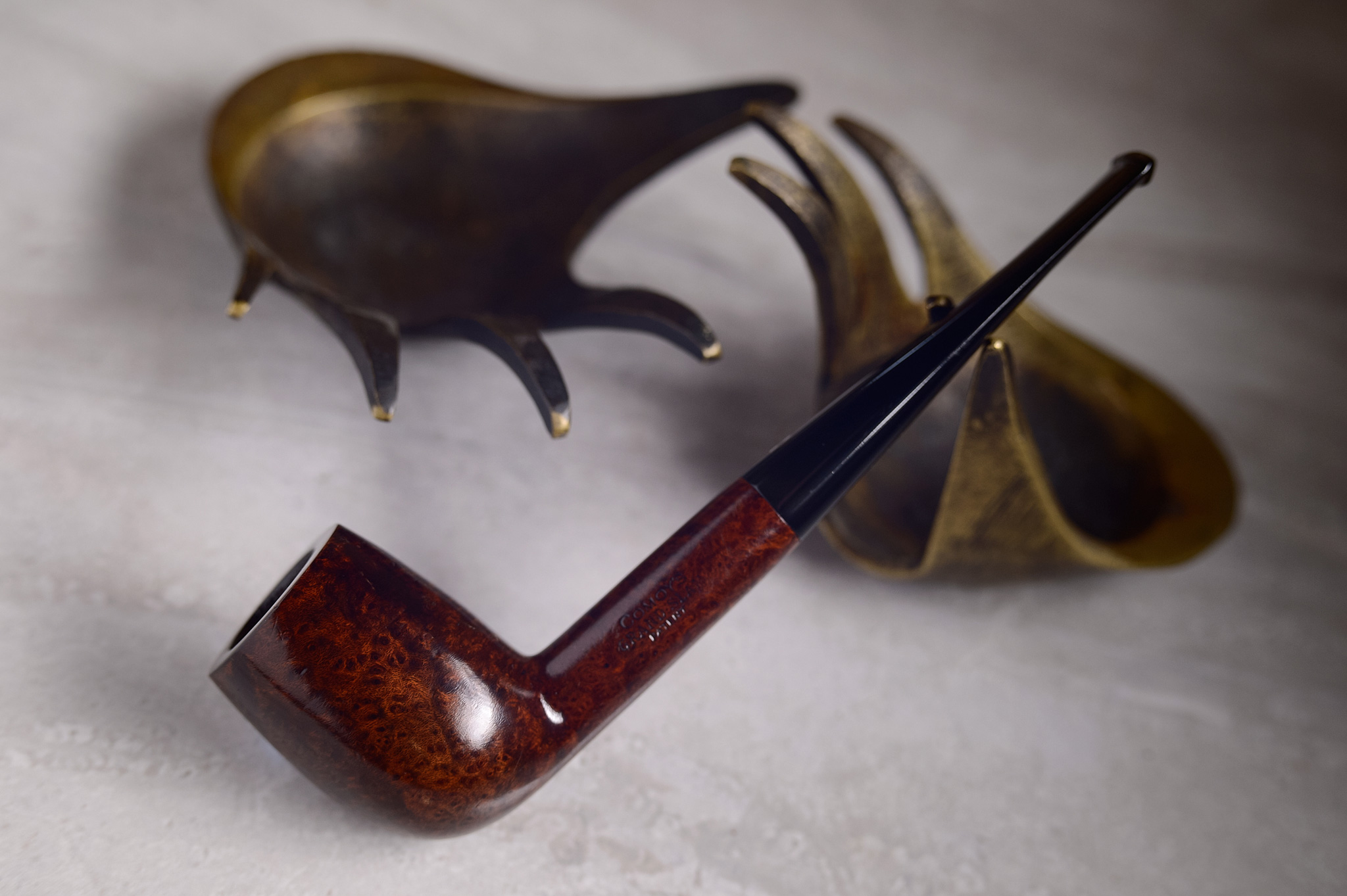


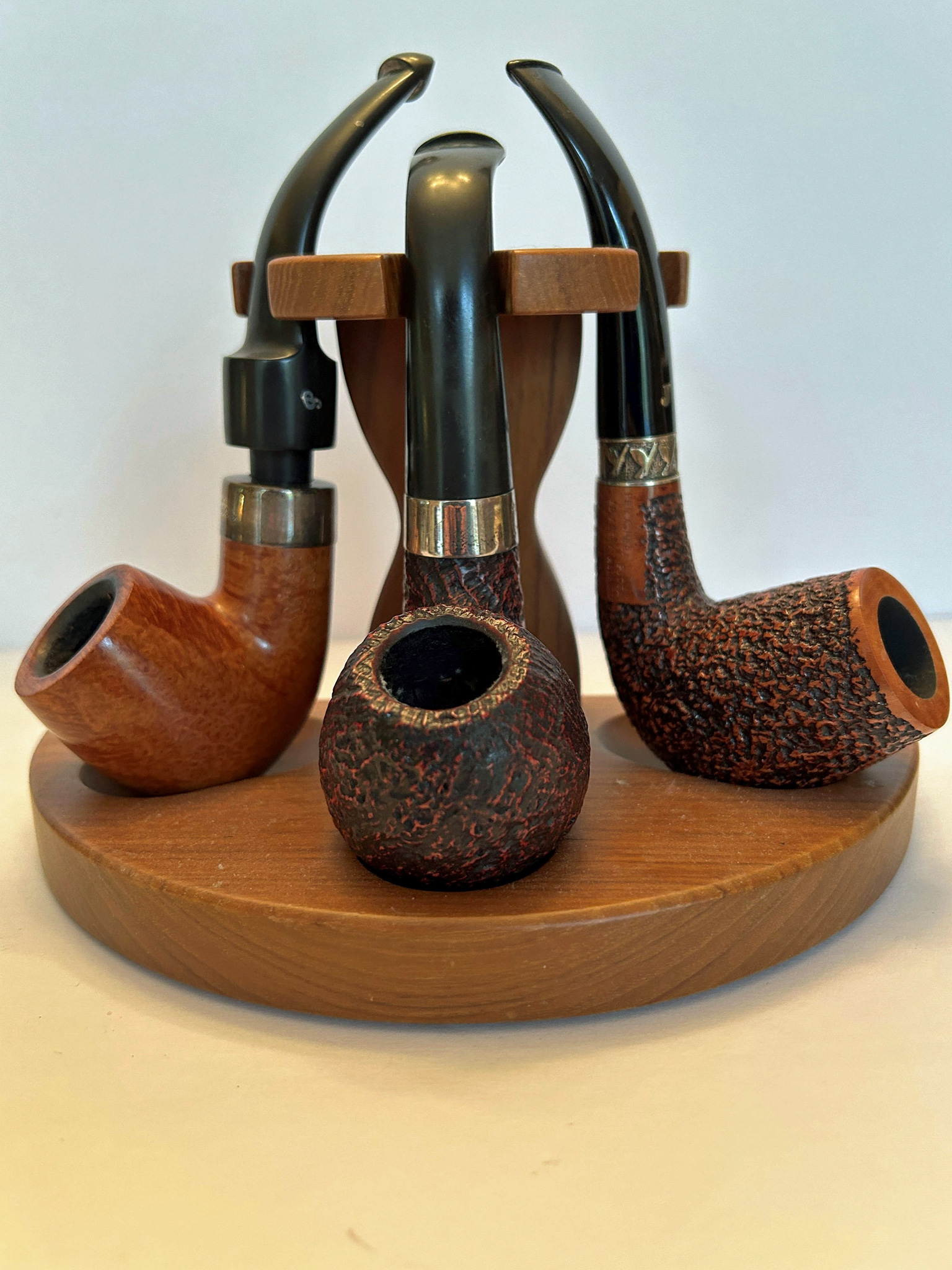




Fantastic subject, and I guess everyone thinks differently on it. I for one don’t mind flaws for a bargain pipe, but do pay premium prices for perfection once in a while. To me it’s like a diamond. If I was in the market and got a 3 carat diamond for a couple hundred bucks with a flaw, I’d most likely take it if it doesn’t stand out like a sore thumb.
Just because a small pebble got into the brier burl makes no never mind to me as long as the pipe smokes well and wont burn through at the flaw.
Thanks for your insight Russ on a topic brought up frequently here on the forum. A pipe doesn’t have to look perfect to smoke well, but on the flip side we do want the manufacturer to be straight up on what we are purchasing!
It is odd how some fills stand out worse than others, even within a manufacturer. I have some pipes that have fills that are difficult to spot and others, with a similar finish and a similar size fill, that are quite glaring!
Wow I really never thought about flaws until now. But I don’t own any expensive pipes either.
Great article Russ. I hope maybe some folks will,after reading it, see that it is very possible to get a great smoke from pipes that are not perfect.
Dang-it Russ… I thought I was through thinking for the day.
Another great read!
Thanks for raising the issue. I actually prefer rusticated and sandblasted pipes because they are easier to hold with arthritic hands. If a top notch pipe is discounted because a cosmetic flaw necessitated those treatments, I’m the better off for it. BTW, I read somewhere that sandblasts should be the most expensive pipes because it is so labor intensive. Ironically, then don’t usually command prices anywhere near that of clear finishes.
Very fine article, Russ. Very interesting points you brought up, as you always do.
This is one more reason I like Edward’s pipes. The typical non high grade natural wall shapes were famous for having some fills and Edward’s never really tried to hide it in some of their marketing. Just shine it up with carnuba and let it go. The main purpose of any pipe should be to absorb moisture and expel heat. Can’t do that if its been lacquered or painted. Large fills that go from one side of the bowl to the other can burn hot……Ive seen many a basket pipes this way. But like Russ stated not all fills are doom and gloom.
Thanks for sharing your thoughts on this, Russel. I never really gave much thought to it before, and I assumed that fills we’re part of the game. You pay your money, and take your chances. But sometimes, the fills give a little character to a pipe that otherwise might be bland to look upon. Sometimes, the fills don’t even show up till the pipe darkens a bit, so if you have smoked it enough to show fills, then the pipe must have become an old friend. How many among us don’t a a few fills or blemishes?
Good article Russ. I don’t like when fills are somehow covered up and emerge later. I have a Savinelli Autograph second. When I bought it I couldn’t understand why it was a second. Then as I cleaned and polished the pipe the fill became more and more evident. But again still a nice pipe. I kind of like small pits. I have a Rad Davis that has a few pit marks on the bottom of the bowl. I’d rather not have them, but I don’t think it really detracts from the pipe aesthetically.
Thank you for taking the time to put your thoughts down for us on the subject. My personal stance is that flaws are fine, as long as the customer knows about them before they buy it, and it’s priced appropriately.
Great article.The reason this will never be settled is because humans break down into two groups with respect to less than perfect. Some can live with it and even look for the hidden virtues that exist because of deficits. Others react viscerally to the word and idea of a “flaw” as it’s not, in their opinion, the highest state of the art or what nature intended us to reach. Both viewpoints are valid if not driven to extremes or we wouldn’t have rehabilitation on the one hand or great music on the other.
Have never let a cosmetic flaw stop me from buying a pipe and consider it OCD to worry about it unless it is a collector grade pipe, the most of which never get smoked anyway. And there you have it.
Great article. Shape, maker’s reputation, as well as my own experience with a maker’s pipes is all I consider when purchasing a pipe. I have many pipes with fills that are tremendous smokers, as well as having offered me fantastic value. I smoke my pipes for me, I say don’t let fills be a deterring factor.
Good article, as usual, Russ. I’ve never considered minor flaws to be a problem for a good pipe. For me, the aesthetics of the design, feel, and overall look of the pipe, along with it’s smokeability, are the significant factors. Two of my favorite pipes belonged to my father. They both have visible flaws, but I wouldn’t trade them for any of those perfect, 4-figure pipes. Besides, sometimes a minor flaw adds a little character, and that kinda fits me…
Hi, Russ. Enjoyed your informative article. Just wanted to say that my future wife bought me a pipe in 1964 which cost $25.00 then. It has two fills. I imagine I’ve smoked it once a week since then, and it remains one of the best smoking pipes I’ve ever had. I rank it right up there with my perfect handmade flame grain Charatan.
My very first pipe, a Savinelli Dublin, which I bought for around $80 new at a B&M, has a fill that I didn’t notice until more than a year later. I did not really know what to look for but I actually “felt it” before I saw it. I was kind of disappointed that I would be sold a pipe that had a defect.
I have no filled pipes. Since the presence of pits in no way affects the smoking qualities of a pipe, my only objection to them is aesthetic. They detract from the visual enjoyment of an otherwise beautiful pipe. Although I prefer a perfect piece of briar, I’d rather look at a small fissure than a fill. Fissures are a natural occurance in briar and don’t present much of a detraction for me.
Russ: I wonder if you can tell me if the pipe pictured at the top of this article is available for sale through P&C. It is the full bent, rustic, brownish bit, silver band. I have been looking for a large full bent just like that one and have come up empty. Thanks – Rob from Louisville, KY.
It may be worth noting that the Celtic artists who drew the most complex and elaborate knot work illustrations always made just one deliberate mistake in their drawings. Their reason for doing so being that anything achieving perfection challenges the perfection of god and so presents hubris of the highest order.
Unlike me and my pipe, they did not stuff their drawings with combustible material and set fire to it. Which is lucky for all of us, especially since briar smokes better, and although a filled flaw can annoy it can also remind us of what is of true value in this world as the smoke of a good pipe and wonderful tobacco wafts skywards and fills heaven with its splendid aroma.
😉
John
sand pits,to me add character to a pipe if they don’t interfere with the smoking process or the life of the pipe. Flaws I evaluate aesthetically and fills I try to stay away from as much as possible. Thanx for the article, and also for your wonderful baccy
Fantastic article..as per usual Russ. I buy a pipe for looks and feel and hope for the smokability. As long as the flaws don’t affect the smoke…after all..doesn’t everybody have some sand pits,fills and flaws but we still accept them as friends..I know I have more than my share,..I’m not gonna play Pipe God….he accepts our flaws…getting off the soap-box. Looking foward to seeing you in Richmond Russ…
Funn
I once knew a fellow in France who bought a $60 BC and found it had fills, and was so offended he wrote an angry letter to the company. Another guy bought a 19 euro basket pipe at our shop and returned it complaining that it had fills in it. I was left wondering, “What world are these guys living in?”
I was trained in foundry work at university and have worked under some fairly renowned bronze sculptors. In bronze sculpture it is very common for even the best contemporary pieces to be full of small pits and imprefections from casting (you don’t even want to know whats in the work of the “old masters”, Rodin, Dagas etc.) Their answer? Shoe polish, putty and anything else the artists and artisans could find to fill these imperfections. Just a little perspective…
The focus of this article are pits and fills but also flaws–and one that I consider difficult to bear is when the mouthpiece or stem doesn’t seat perfectly to the shank. A good number of pipes reveal a gap between the lucite or rubber and the briar, which cannot be “cured” by using force to push them together. Sometimes the gap is miniscule and others when it is very apparent. I would expect that this issue could be dealt with adequately before a pipe goes on the market and really don’t understand why it isn’t.
It reminds me of a Buick I once owned–the driver’s door gaped and no amount of readjustment would fix it. No matter what they did, the gap was high or it was low. Or it angled in one direction or the other.
Bob (now a Nissan owner)
Bob,
I’ve had success using a dental spatula (rigid, very thin, has 90-degree
corners) to thoroughly scrape out the mortise. This often corrects the
problem of a stem not going all the way in.
re Bob Silverman’;s comment:
I only partially agree with your point that “this issue could be dealt with
adequately before a pipe goes on the market.”
If a pipe is offered as “cleaned,” then, yes, it should be clean, including
the mortise. But, for instance, if I buy a collection and am selling a few
“basket pipes” out of it, I’m not going to invest a half hour cleaning a
pipe that’s going to sell for $7.00.
Rob Denholtz
Carpinteria, CA